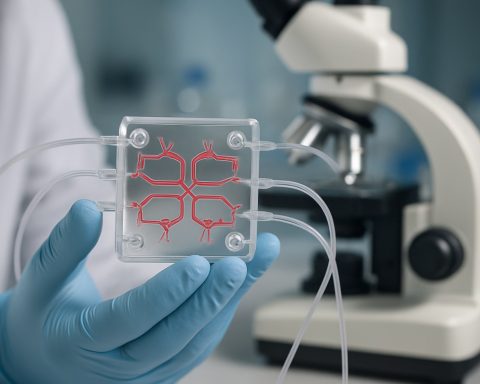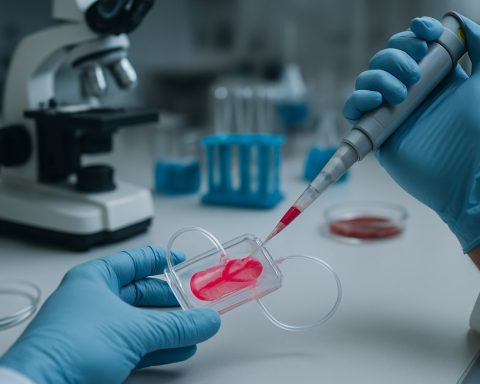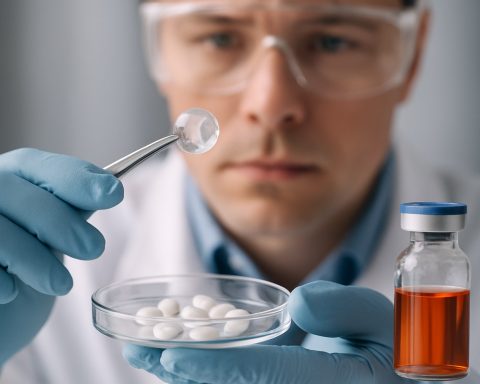- Porsche is leading a sustainable initiative to recycle high-voltage EV batteries into “black mass” containing valuable materials like lithium, nickel, cobalt, and manganese.
- The project aims to extract and purify these elements to create new, high-performance batteries, reducing reliance on volatile raw material markets.
- Porsche has amassed 65 tons of black mass, highlighting the potential of this approach in the circular economy of the automotive industry.
- With an 80% lithium recovery target by 2031, this initiative aligns with stringent EU mandates and sets a benchmark for environmental stewardship.
- Currently, only 5% of lithium-ion batteries are recycled, despite their 95% recoverable material content, indicating a significant opportunity for change.
- Porsche’s efforts could inspire broader adoption of recycling practices, promoting both eco-friendly innovation and a healthier planet.
In a world increasingly driven by the hum of electric engines, a profound challenge looms—how to breathe new life into the decaying high-voltage batteries powering our electric dreams. Against this backdrop of environmental urgency, Porsche engineers are turning what might seem like trash into treasure, ushering in an era of sustainable luxury.
Amid the gleaming machinery and bustling innovation at Porsche’s research facility, a remarkable transformation is taking place. Mountains of spent electric vehicle (EV) batteries, once doomed to languish in landfills, are instead being shredded and pulverized into something surprisingly precious—a glistening granulate known as “black mass.” This dense mixture, a byproduct rich with promise, contains the coveted elements of lithium, nickel, cobalt, and manganese.
With precision and innovation, Porsche aims to distill this gritty amalgam into its purest form. The process unfolds like a meticulous alchemy, extracting these crucial ingredients to forge new, high-performance batteries that will power the next generation of Porsche’s electric marvels. This initiative not only targets automotive excellence but also speaks to a more profound ambition—reducing reliance on the turbulent and geopolitically charged raw material markets.
As the gears of this pilot project turn, Porsche has already amassed 65 tons of black mass, a testament to the potential locked within these discarded powerhouses. If this venture into circular sustainability succeeds, it will set a benchmark for both innovation and environmental stewardship in the auto industry. What’s more, this daring leap aligns with stringent European Union mandates, specifically achieving an 80% recovery rate of lithium by 2031.
In navigating the complexities of this industrious undertaking, Porsche is not merely attempting to solve an environmental problem but redefining it as an opportunity for profound change. The broader automotive world watches closely, perhaps envisioning a future where luxury and sustainability coexist harmoniously.
Only a fraction—a mere 5%—of these lithium-ion giants are currently recycled, despite the fact that up to 95% of their valuable materials can actually be salvaged. This discrepancy presents a compelling case for change, both environmentally and economically, as recycling could dramatically curtail the need for disruptive mining practices.
Porsche’s pioneering venture could inspire a sea change across the motoring landscape, beckoning other brands to follow suit. As more companies embrace these innovations, we move one step closer to a world where recycled resources power the journey, not only towards sustainable personal transport but also a healthier planet.
Porsche’s Revolutionary Approach to Battery Recycling: Turning Waste into Wealth
Introduction
In a world increasingly driven by green energy and environmental consciousness, electric vehicles (EVs) are at the forefront of sustainable innovation. Yet, the challenge remains: how to effectively recycle the high-voltage batteries that power our eco-friendly dreams. Porsche is leading the charge, turning potential waste into a valuable resource through their groundbreaking black mass recycling initiative.
The Black Mass Phenomenon
What is Black Mass?
Black mass is the result of shredding and pulverizing old EV batteries. This dense granulate is rich in key elements like lithium, nickel, cobalt, and manganese, which are crucial for the production of new batteries.
Porsche’s Strategy
Porsche has already collected 65 tons of black mass, aiming to extract and refine these elements for new battery production. This process not only contributes to sustainable luxury but also reduces dependency on the raw material markets, which are often geopolitically volatile.
The Environmental and Economic Impact
Meeting EU Mandates
Porsche’s initiative aligns with the European Union’s stringent mandates. By 2031, the EU requires an 80% recovery rate of lithium from recycled sources—a target Porsche is keen on achieving.
Environmental Benefits
– Reduction in Mining: Currently, only 5% of spent lithium-ion batteries are recycled, though up to 95% of their materials can be reclaimed. Porsche’s process can dramatically reduce the need for new mining operations, which are often environmentally destructive.
– Decreased Landfill Waste: By preventing batteries from ending up in landfills, Porsche contributes to reducing hazardous waste and environmental degradation.
Industry Trends and Predictions
A Paradigm Shift in the Automotive World
Porsche’s venture may pave the way for widespread adoption of similar recycling technologies. As the automotive industry observes Porsche’s success, more companies are likely to invest in recycling initiatives, fostering a future where luxury and sustainability coexist seamlessly.
Market Impact
– Cost Efficiency: Recycled materials could reduce costs associated with raw material procurement.
– Supply Chain Stability: Dependence on volatile raw material markets can be mitigated, providing greater supply chain stability.
How-To: Battery Recycling Process
1. Collection: Gather used EV batteries.
2. Shredding: Break them down into black mass.
3. Extraction: Use chemical processes to extract lithium, nickel, cobalt, and manganese.
4. Recycling: Purify and reuse these elements in new batteries.
Challenges and Limitations
1. Technical Barriers: The extraction process is complex and requires significant technological investment.
2. Regulatory Compliance: Must adhere to regional recycling mandates, which can vary widely.
3. Economic Feasibility: Initial costs for setting up recycling operations can be high.
Recommendations and Quick Tips
– For Consumers: Opt for brands that invest in sustainable practices, enhancing the life cycle of your vehicles.
– For Auto Manufacturers: Consider leveraging partnerships with companies like Porsche to enhance recycling capabilities.
Conclusion
Porsche’s black mass recycling initiative is a testament to innovative thinking in the automotive industry. By turning waste into wealth, they are not only advancing sustainable luxury but also setting a new standard for environmental responsibility. The future of EVs is bright, with recycled resources paving the way to a greener planet.
For more on Porsche’s sustainability efforts, visit Porsche.









